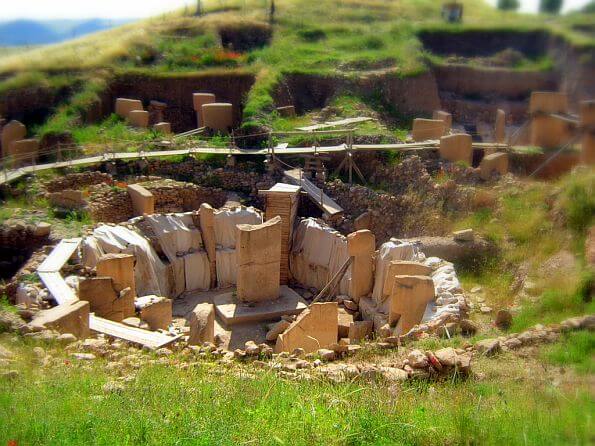 What were our ancestors like 10,000 or more years ago? The most common image is one of small nomadic bands endlessly in pursuit of the next meal. Men hunted game while women and children gathered fruits, seeds, roots, shoots, insects, and other edibles.
What were our ancestors like 10,000 or more years ago? The most common image is one of small nomadic bands endlessly in pursuit of the next meal. Men hunted game while women and children gathered fruits, seeds, roots, shoots, insects, and other edibles.
The height of technology was a finely worked stone knife blade or spear point; nets, baskets, and cordage were also put to good use. Permanent structures were superfluous, for the group never stayed in one place very long. Material goods were sparse as possessions had to be limited to those easily carried. Jewellery (perhaps beads, animal teeth, or shells strung on a cord) and personal decoration (body paint, tattoos) were prized. In colder climates appropriate clothing was fashioned from animal skins. Social institutions were minimal. Not until the Neolithic Revolution, beginning about 10,000 years ago, did agriculture and domestication appear. This in turn allowed permanent settlement, leading to specialisation of labour, the development of crafts (including pottery and metalworking), the building of substantial structures, long-distance trade, and the slow and gradual evolution of complex societies.
None of this happened overnight. It took thousands of years, and it was not until around 4000 to 3000 BCE that true signs of high culture first appeared, such as fine artistry in decorative crafts, written records, scientific observations of the heavens, complex political organisations, and megalithic building projects. This level of achievement was reached in Mesopotamia, the Nile Valley, and the Indus Valley by the beginning of the third millennium BCE. A well-known example is the rise of dynastic Egypt about 3200 to 3100 BCE and the building of the Djoser pyramid circa 2630 BCE. Stonehenge in England dates from the same period.
Although accepted as dogma by many, this nice neat scenario may be completely wrong.
Questioning Accepted History
Back in 1991, I had the temerity to announce that the Great Sphinx of Egypt, conventionally dated to 2500 BCE (the reign of Pharaoh Khafre), actually has its origins in the 7000 to 5000 BCE range, or possibly earlier. My announcement was done via a presentation at the October 1991 annual meeting of the Geological Society of America (this was allowed only after a formal abstract, submitted with my colleague John Anthony West, was accepted based on positive professional peer review).
